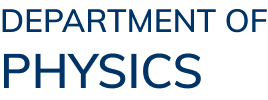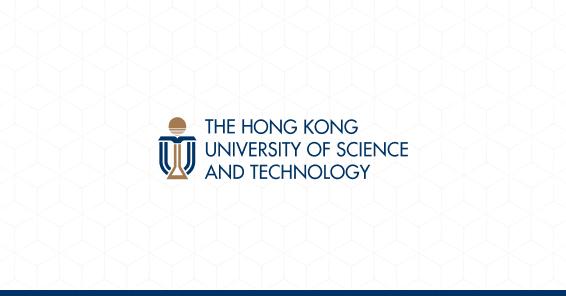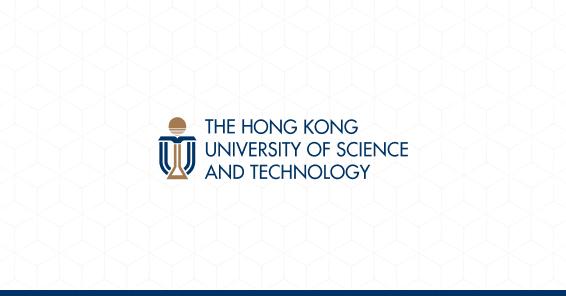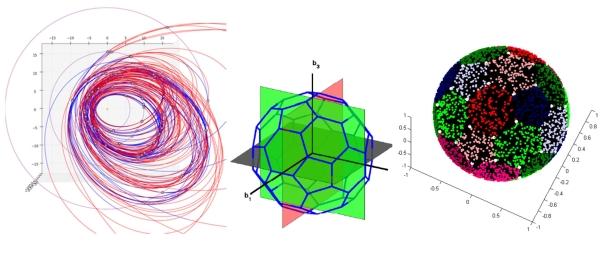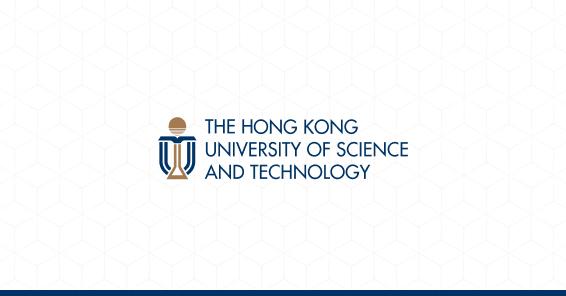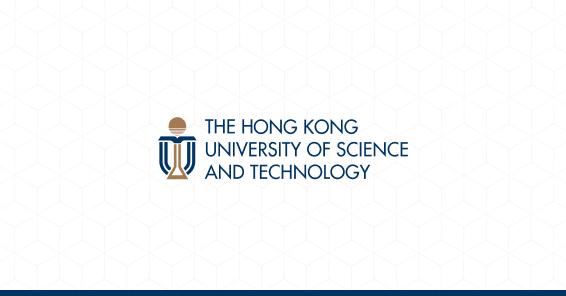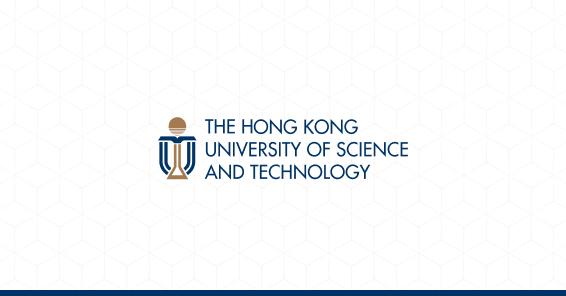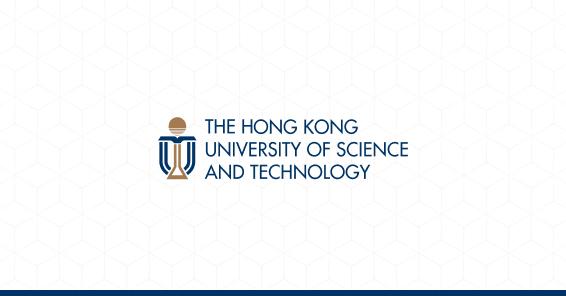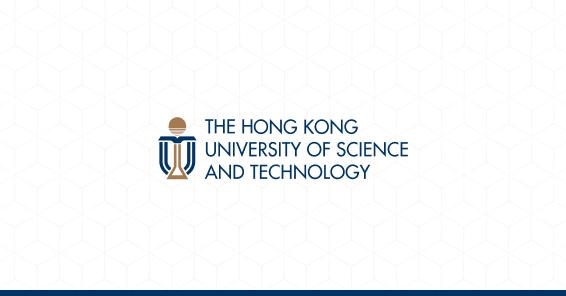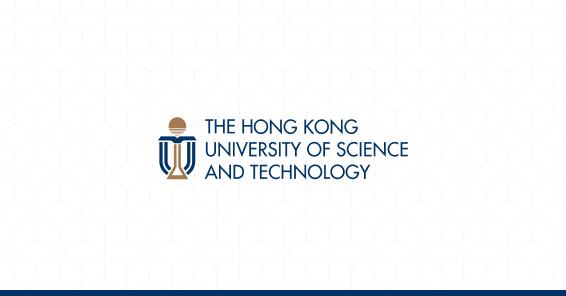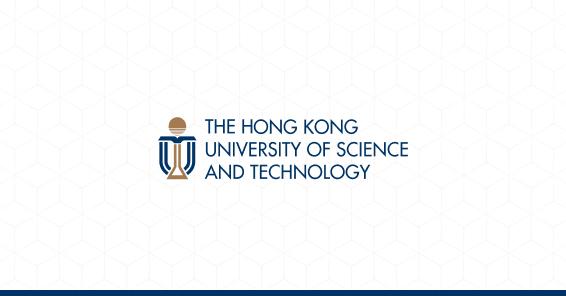News & Events
2013-04-08
UC RUSAL (SEHK: 486, Euronext: RUSAL/RUAL, Moscow Exchange: RUALR/RUALRS), a leading global aluminium producer, and the Hong Kong University of Science and Technology (HKUST) invite Prof John Ellis, Clerk Maxwell Professor of Theoretical Physics at King’s College London and Physicist at European Organization for Nuclear Research (CERN) to speak at the UC RUSAL President’s Forum on 12 April 2013.
Hosted by Prof Tony F Chan, President of HKUST, the UC RUSAL President’s Forum will feature the world-renowned British theoretical physicist and Maxwell Medalist Prof John Ellis. He will share insights on the prospects of finding the answers posed in Paul Gauguin’s famous paintings: “What are we? Where do we come from? Where are we going?” In particular, Prof Ellis will focus on the new particle discovered recently at the Large Hadron Collider (LHC) at CERN, which may be the Higgs boson that provides the masses of elementary particles, making possible the existence of atoms.
Prof Ellis pointed out earlier that the Higgs boson has been the hottest pursuit in modern physics. He analogized it to a piece missing right in the middle of the giant jigsaw puzzle, the Standard Model which describes all fundamental particle physics. It was first proposed almost 50 years ago and physicists have been looking for this for 30 years now, and it is one of the most important tasks of the LHC at CERN.
Prof Ellis graduated from King’s College, Cambridge, in 1971 with a PhD in theoretical high-energy particle physics. After two post-doctoral positions at SLAC (now SLAC National Accelerator Laboratory) and Caltech, he settled in CERN in Geneva and held a permanent contract there from 1978. CERN’s Large Hadron Collider (LHC) is the world’s most powerful particle accelerator and one of the largest scientific experiments ever, which tries to address the most fundamental questions of physics and the cosmos.
Prof Ellis’ research interests focus on the phenomenological aspects of elementary particle physics with important contributions to astrophysics, cosmology and quantum gravity. A substantial part of his extensive work relates directly to experiment: interpreting results of searches for new particles and exploring the physics that could be done with future accelerators. He is accredited with being one of the pioneers of particle astrophysics: the interface between particle physics and cosmology. He has authored nearly 1,000 scientific papers, some with over 50,000 citations. He is the second most-cited theoretical physicist in the world and is currently very active in efforts to understand the Higgs-like particle discovered recently at CERN.
In 1982 and 2005, Prof Ellis was awarded the Maxwell Medal and the Paul Dirac Prize respectively by the Institute of Physics. He was elected Fellow of the Royal Society of London in 1985 and of the Institute of Physics in 1991, and is an Honorary Fellow of King’s College Cambridge and of the Serbian Physical Society.
The UC RUSAL President’s Forum featuring Prof John Ellis will take place at 3.00pm on 12 April 2013 (Friday) at Lam Woo Lecture Theater (LT-B) of HKUST. For more details, please visit: http://ias.ust.hk/ucrusal/.
The UC RUSAL President’s Forum
The UC RUSAL President’s Forum is organized under the auspices of the HKUST Institute for Advanced Study and is held biannually in Hong Kong. Prestigious scholars and scientists as well as successful business leaders and entrepreneurs are invited to share with the audience their views on varied topics including the latest trends in science and technology and its relationship with and impact on humankind, knowledge transfer, entrepreneurship, innovation and creativity. Speakers also engage in a dialogue with the HKUST President. Previous Forum speakers include UC RUSAL CEO Mr Oleg Deripaska, Nobel Laureate in Economic Sciences Prof Christopher Pissarides, then-Chairman of Goldman Sachs Asset Management Dr Jim O’Neill, Chairman of Esquel Group Ms Marjorie Yang and Chairman of Hong Kong Mercantile Exchange Mr Barry Cheung.
About UC RUSAL
UC RUSAL (www.rusal.com) is a leading, global aluminium producer, in 2012 accounting for approximately 9% of global production of aluminium and 8% of alumina. UC RUSAL employs about 72,000 people in 19 countries, across 5 continents. UC RUSAL markets and sells its products primarily in the European, Japanese, Korean, Chinese, South East Asian and North American markets. UC RUSAL’s ordinary shares are listed on The Stock Exchange of Hong Kong Limited (Stock code: 486), global depositary shares representing UC RUSAL’s ordinary shares are listed on the professional compartment of Euronext Paris (RUSAL for Reg S GDSs and RUAL for Rule 144A GDSs), and Russian depositary receipts that are issued on common shares of the Company are listed on Moscow Exchange (RUALR/RUALRS).
About the Hong Kong University of Science and Technology
The Hong Kong University of Science and Technology (HKUST) (www.ust.hk) is a top-ranked international research university excelling in science, technology and business as well as humanities and social science. Internationally renowned for its academic rigor and accomplishments, the University promotes interdisciplinary studies and provides holistic education, nurturing well-rounded graduates with a strong entrepreneurial spirit, innovative thinking and relevant skills to thrive in a knowledge economy. As an international university with strong ties to global thought leaders, HKUST has wide-ranging connections with Mainland China while aspiring to be a global premier knowledge hub and a center of research breakthroughs. HKUST was ranked Asia’s number one for the second year in a row in 2012. It was placed third for the world’s under-50 universities in 2012. The Kellogg-HKUST Executive MBA (EMBA) program, for the fourth straight year, topped the Financial Times EMBA global rankings.
Read more
2013-01-28
Prof Tianshou Zhao, Chair Professor of Mechanical Engineering and Director of Center for Sustainable Energy Technology, and Prof Qian Zhang, Professor of Department of Computer Science and Engineering at the Hong Kong University of Science and Technology (HKUST) were recognized with the most prestigious awards in science and technology in China – State Natural Science Award (Second Class) bestowed by the State Council of the People’s Republic of China. Another research project “Discovery and investigation of novel magnetocaloric effect materials” by Prof Xixiang Zhang, a former professor and now an Adjunct Professor at HKUST’s Physics Department, and the research team from the Institute of Physics Chinese Academy of Sciences also won the State Natural Science Award (Second Class).
The State Science and Technology Awards (SSTAs) are China’s most prestigious honor in science and technology. They are conferred by the State Council of the People’s Republic of China on outstanding individuals and institutions for their significant contributions to the development of science and technology. The State Natural Science Award is one of the categories under SSTAs.
As a world-class research university, HKUST is committed to scientific and technological advancement in various disciplines. With major breakthroughs in a wide range of scientific pursuits, the award demonstrates HKUST faculty’s breadth of research talents and their outstanding performances.
“Investigations of multi-scale and multi-physics field coupled fluid flow and heat/mass transfer in complex systems” by Prof Tianshou Zhao
Through the Overseas Outstanding Scholars Project of National Natural Science Foundation of China and other collaborative projects, Prof Tianshou Zhao and researchers from the School of Energy and Power Engineering, Xi’an Jiaotong University, have conducted collaborative research over the past decade. By the unique research methodology and strategy with integration of experimental observations, theoretical investigations, and computational modeling, the team made significant contributions in the field of heat/mass transfer in complex systems. The main breakthrough in this project is the construction of a framework that describes multi-scale and multi-physics field coupled fluid flow and heat/mass transfer processes by creating and using microscopic, mesoscopic and macroscopic theoretical and numerical approaches. Multi-scale and multi-physics field coupled fluid flow and heat/mass transfer problems are frequently encountered in many complex practical systems including energy, power, chemical, environmental, and biomedical processes and systems. The outcome resulting from the project is particularly important in improving the energy efficiency and reducing greenhouse gas emissions of energy conversion systems.
“Models for Joint Wireless Multimedia Communication and Performance Optimization” by Prof Qian Zhang
Prof Zhang and her partners from the Tsinghua University conducted collaborative research from 1998 to 2008. Starting from the fundamental nature of the wireless multimedia communication, the team revealed the interaction between the structured nature of multimedia information and the dynamic characteristics of the error distribution in wireless networks, established the modeling methodology and performance evaluation theory for multimedia processing and joint optimization in wireless network, made significant contributions to the development of the basic theory for wireless multimedia communication. The project made a major breakthrough in efficient video communications under the discontinuous transmission conditions, and effectively increasing bandwidth efficiency. The outcome resulting from the project is particularly useful for the design of future wireless video, mobile multimedia systems, as well as next-generation wireless networks.
Read more
2012-12-10
A team comprising faculty and students in the School of Science made a splash of colors in its first ever Global Trajectory Optimization Competition (GTOC), where it landed in second place ahead of 32 contesting teams from the US, Germany, Russia, Mainland China and others. The solution is set to provide insights for the major space mission to the Jovian system by the National Aeronautics and Space Administration (NASA) and European Space Agency (ESA) in 2020.
This year, the participating teams were tasked with the design of a space orbit that achieves maximum coverage of the Galilean moons of Jupiter, including Io, Europa, Ganymede and Callisto. The Galilean moons have long been a subject of sustained scientific interest due to the hypothesis of a liquid ocean existing under the Europa’s icey surface which may serve as an abode for extraterrestrial life. Meeting time, fuel, mass and check-point criteria, the teams were to map in proximity the 32 stipulated regions over the surfaces of the four moons in the most optimal fashion.
The HKUST team comprises Prof Kwing-lam Chan, Professor of the Department of Mathematics and Director of Center for Space Science Research, Prof Kwok-yee Wong, Professor of the Department of Physics, Dr Chit-hong Yam, consultant of the Center for Space Science Research, as well as four second year undergraduate students including Tsz-yan So of the Department of Mathematics, Kai-yin Leung, Kin-chiu Chu and Heimonen, Hermanni Juuso Elias of the Department of Physics. In collaboration with ESA, the team made use of handy and comprehensive orbit calculation methods and devised its own program based on heuristic algorithms, making sure the orbit satisfied all requirements of the Competition. With 141 close encounters at the moons of Jupiter, the joint team scored 308 and clinched the second place with the honor of having visited most of the spots, missing the winning team from Italy by mere 3 marks.
Prof Nancy Ip, Chair Professor and Dean of Science said, “All the student participants were in their first year of study at the time of the competition. Yet, despite being confronted with an unfamiliar topic, and competing with other high-caliber contestants, they used their combined knowledge in mathematics and physics effectively while showing remarkable resilience to reap their well-deserved reward. Furthermore, the team displayed an impeccable team spirit by encouraging each other on to rise above the odds. These are the essential qualities required to be successful in science and technology research. It is our goal at the School to foster the growth of our students to help them realize their full potential.” Despite this being their first time participating in the competition where world-class masters converge from all over the world, HKUST students which were then in their first year have come under excellent tutelage of faculty and advisors through Undergraduate Research Opportunities Program (UROP) and swiftly mastered the principles and techniques of space orbit designs in just one summer. Interdisciplinary thinking aside, their excellent analytical and problem-solving skills plus seamless teamwork are key to this impressive achievement.
The GTOC teams were invited to a workshop in the US and engage in a fruitful dialogue with other participants on their experience of the designing space orbit. They also toured the state-of-the-art research facilities of NASA at Caltech, gaining a deeper appreciation of what first-class aerospace technology entails.
Now in its 6th year, GTOC opens every one or two years with an aim to raising the standard of space orbit design and provide a platform for world’s best researchers and engineers to get together and exchange ideas on the latest trends and technologies in the field. For years, it has elicited enthusiastic participation from experts of all quarters, who are eager to hone their skills and enhance understanding through joining this intense competition. Hosted this year by NASA’s Jet Propulsion Laboratory, GTOC gathered the world’s top aerospace engineers and challenged them to come up with solutions to a highly complex problem of interplanetary trajectory design within a month.
Reference Materials:
Presenations:
/press_release_archive/eng/news/photos/20121210-1004-GTOC_Poster-1.pdf
/press_release_archive/eng/news/photos/20121210-1004-gtoc6_act_hkust_hippo_v3.pdf
/press_release_archive/eng/news/photos/20121210-1004-gtoc6_act_hkust_MichaelWong_v2.pdf
Video link:
https://www.youtube.com/watch?edit=vd&v=fs3hCDZ8Kno
Read more
2012-10-23
The School of Science at the Hong Kong University of Science and Technology (HKUST) and Roche co-hosted the launch of the first Roche Young Scientist Award (RYSA) yesterday. The initiative aims to foster curiosity, creativity, and passion for science in the youth of Hong Kong by challenging them to apply their science knowledge towards improving human lives.
As co-organizer of the event, Prof Nancy Ip, Dean of Science of HKUST, is pleased to give the School’s full support to this meaningful event, “We believe that scientific breakthrough is the gear for further advancement of society. Therefore, nurturing science talent and promoting the innovative spirit in science is always at the heart of our curriculum. HKUST and Roche have the same vision in recognizing scientific excellence, and we are delighted to have the opportunity to play a leading role in developing and enhancing the scientific interests of today’s youth. By co-organizing this event, we aim to provide a platform for our young generation to discover their potential while exploring new possibilities, and showcase their talent to the public.”
Local students between the ages of 13 and 16 are invited to participate in the RYSA, as a team consisting of one to three students. Each team is required to submit a proposal (of not more than 800 words) detailing a research or an invention to address a health issue. Twenty-five teams will be short-listed in the first round and ten in the final round. Furthermore, more than 20 undergraduate science students from HKUST have been invited to mentor the short-listed teams. They will share key scientific approaches used to address problems, and provide guidance to the teams to improve the effectiveness and practicality of their proposals.
“As a leading global healthcare company that is innovation-driven, and uniquely positioned with pharmaceuticals and diagnostics under one roof, we are extremely pleased to launch RYSA, a meaningful initiative and the first of its kind in Hong Kong which emphasizes innovation and creativity while addressing the shared concern of health issues,” said Mr Johnny Tse, General Manager of Roche Diagnostics (Hong Kong) Limited.
The School of Science at HKUST has established numerous collaborations with industrial partners through research and professional exchanges. Our undergraduate students also have opportunities to extend their horizons beyond the classroom. Students are involved in different collaborative projects offering exposure to research opportunities and practices in industry.
“We are glad to have the support of HKUST’s School of Science, which is well-known for its outstanding research and science education. We have a shared vision of developing initiatives of this kind into a long-term nurturing ground for our future scientists,” said Mrs. Rachel Frizberg, General Manager of Roche Hong Kong Limited.
All participants of RYSA will be invited to join a seminar and briefing session in November. A guest speaker, Prof Leung Pak Wo from the Physics Department of HKUST will share his insights through the topic of “Science, Research and Fun”, which will be followed by a campus and laboratory tour.
Read more
2012-10-11
A research team led by Prof Yilong Han at the Department of Physics of the Hong Kong University of Science and Technology (HKUST) has for the first time successfully observed homogeneous melting at single-particle resolution, closing the long-term debate on alleged defects generated before melting. In addition to this, Prof Han and his team members Ziren Wang, Feng Wang, Yi Peng and Zhongyu Zheng also measured the superheat limit of colloidal crystals for the first time. All of these discoveries have been published in the latest issue of Science, one of the world’s most prestigious scientific journals.
Crystal melting is a common phenemenon in nature, the conversion between ice and water being an everyday example. Notwithstanding the commonness, its microscopic mechanism remains poorly understood. The formation of liquid nucleus at the initial stage of phase change is crucial to the whole melting process, but its kinetics are difficult to measure because individual atoms or molecules are too small, moving too fast and difficult to observe in bulk. To explicate this phenomenon, micrometer-sized colloids have been used as ‘big atoms’ to simulate the more minutiae atomic systems because they demonstrate similar phase behaviors. For instance, colloidal particles can form crystals such as the gemstone opal. As such, researchers can directly observe colloidal particles’ thermal motions under optical microscope and track their trajectories using image processing.
On the other hand, achieving homogeneous melting is another long-standing challenge facing the scientific community, because crystals always melt from surfaces or defects once they are heated to the melting point. If surface melting is surpressed in a perfect crystal, the crystal can be superheated above its melting point and this will lead to homogenous melting. Prof Yilong Han and his research group cleverly focused a beam of light into a high-quality colloidal crystal to achieve the superheated state and investigated homogeneous melting at single particle resolution for the first time. They observed that liquid nuclei are developed from strong vibrating regions associated with loop motions of particles. Particles swap their positions but preserve the crystalline structure, hence the melting precursors are not any type of defects predicted in past theories. The research team also measured for the first time a colloidal crystal can be superheated 20% above the melting point at most, a result similar to that of metals.
Prof Han said, “We conducted a series of comprehensive measurements on nucleation dynamics, which revealed deviations from the Classical Nucleation Theory. These discoveries deepen the understanding of microscopic processes in homogeneous nucleation and provide crucial experimental input to help guide any future refinement of theories for homogenous nucleation. In the meantime, our experimental system also provides a unique foundation to the study of solid-solid transitions and effects of a single defect or impurity on the melting transitions, which are of foundamental importance in materials physics.”
Prof Yilong Han joined the Department of Physics at HKUST as an Assistant Professor in 2007. He obtained the bachelor degree from Peking University and doctoral degree from the University of Chicago, and did postdoctoral research at the University of Pennsylvania in the US.
Read more
2012-07-30
A research publication by Prof Zikang Tang and Prof George Wong both of the Department of Physics at the Hong Kong University of Science and Technology (HKUST) titled ‘Room-temperature ultraviolet laser emission from self-assembled ZnO microcrystallite thin films’ was recognized to be amongst the top 50 most cited papers over the past 50 years in Applied Physics Letters, one of the world’s most esteemed scientific journals. This is also the only research developed in Greater China region that made it into the top 50.
Prof Tang, Prof Wong and their research team discovered room-temperature ultraviolet (UV) lasing using high-quality nano-structured ZnO semiconductors in 1998, defying the norm that for decades, UV lasing of ZnO could only be observed at low temperatures. The groundbreaking discovery has opened up a wide range of potential applications for ZnO semiconductors in UV laser diodes as well as energy-saving semiconductor white light sources.
Remarkable for its high applicability, the breakthrough discovery made by Profs Tang and Wong has been enthusiastically received and recognized by the international community. The Editor of Science, a world-leading journal, has specially devoted coverage to it in an article titled ‘Will UV Lasers Beat the Blues?’ and described the research as ‘a great work’.
Not only has this notable research generated worldwide interest in ZnO research, it also saw Prof Tang and Prof Wong honored with the State Natural Science Award, Second Class in 2003. True to its significance and growing relevance, the paper has been frequently cited, over 1,240 times, and was honored as one of the top 50 of the most highly cited papers over the past 50 years by Applied Physics Letters. For more details, please visit the website: http://apl.aip.org/apl_50th_anniversary
After receiving the PhD from Tohoku University in 1992, Prof Zikang Tang has been working as a Post doctoral Fellow at the Institute of Physical and Chemical Researchin Japan. He joined HKUST as an Assistant Professor in 1994 and was promoted to Professor in 2005. As an expert in the fabrication and application of nano-structured materials, Prof Tang has received numerous awards for his outstanding research accomplishments, including being named Outstanding Overseas Chinese Young Scholar and appointed as Overseas Expert Assessor of the Chinese Academy of Sciences in 2004. In 2007, he was awarded the Croucher Senior Research Fellowship.
Professor Emeritus George Wong received both his BSc (1969) and PhD (1974) from the University of California, Berkeley. He joined HKUST in 1991 as a founding Professor of Physics. A Fellow of the Alfred P Sloan Foundation and American Physical Society, he taught at Northwestern University for more than two decades prior to joining HKUST. At HKUST, he and his colleagues developed a new generation of UV detectors using Zn based semiconductors. This technology was granted two US patents and commercialized into cost effective UV detectors. His other research interests include nonlinear optics and nanostructures of semiconductors and organic materials.
About Applied Physics Letters
Founded in 1962 by the American Institute of Physics, Applied Physics Letters is amongst the most prestigious and highly cited journals in applied physics. It focuses on significant and leading-edge findings in applied physics encompassing science, engineering and modern technology.
Read more
2012-07-25
The Hong Kong Team of the 43rd International Physics Olympiad (IPhO) proudly brought home 2 Gold, 2 Silver and 1 Bronze medals from Estonia. Students of the award-winning team were trainees of the Physics Enhancement Program under the Hong Kong University of Science and Technology’s (HKUST) Department of Physics.
HKUST is dedicated to nurturing elite talents who are passionate about science to advance the science and technology development of Hong Kong. Hong Kong contestants of the IPhO attended a focused training camp by HKUST for nearly one year having received Bachelor’s level training in theoretical knowledge and practical techniques of Physics includes topics on Optics and Mechanics.
The Physics Enhancement Program was led by faculty members of the Department of Physics including Prof Jason Yang Zhi-yu, Prof Michael Wong Kwok-yee and Dr Sun Ke. The leader of the Hong Kong Team was Prof Wong who accompanied the team to compete at the IPhO.
Prof Jason Yang Zhi-yu said, “The IPhO competition this year was fierce. We are delighted that our Hong Kong Team achieved excellent results by clinching 2 Gold 2 Silver and 1 Bronze medals after undergoing the Physics Enhancement Program at HKUST. We will uphold the mission of HKUST, to advance the social development of Hong Kong through teaching and research, and will continue to offer world-class education to train outstanding young talents.”
The Gold medalists are Secondary Six student Fung Tsz-chai (Po Leung Kuk Centenary Li Shiu Chung Memorial College) and Secondary Five student Lam Ho-tat (Pui Shing Catholic Secondary School). Lam was a Gold medalist and achieved fourth place in Asia amongst competitors in APhO 2012. The Silver medalists are Secondary Six student Chan Cheuk-lun (La Salle College) and Secondary Six student Lai Kwun-hang (Shatin Pui Ying College). Secondary Six student Lo Hei-chun (Chan Sui Ki (La Salle) College) won Bronze medal.
The IPhO this year was held from July 15 to 24 in Estonia attracting 380 contestants from 88 participating countries/regions. The IPhO is an annual Physics competition organized for secondary school students. Each participating team consists of five student contestants who are tested on both theoretical and practical knowledge in Physics.
Read more
2012-05-08
The Hong Kong team of the 13th Asian Physics Olympiad (APhO) trained by the Department of Physics of the Hong Kong University of Science and Technology (HKUST) achieved the best results ever in the competition, amassing 1 gold, 2 bronze medals and 3 honorable mentions. Amongst the brilliant contestants is gold medalist Lam Ho-tat, who achieved fourth place in Asia amongst competitors in APhO.
HKUST is dedicated to discovering and nurturing elite talents who are highly competent and passionate about science, so as to advance the science and technology development of Hong Kong. Hong Kong contestants of this year’s APhO, who are themselves outstanding performers in the Hong Kong Physics Olympiad 2011, have attended comprehensive training by HKUST for one year. Having received training in Physics equivalent to Bachelor’s level, they were tested on their theoretical knowledge and practical techniques for the subject. The Physics Enhancement Program was led by faculty members of HKUST’s Department of Physics including Prof Jason Yang Zhi-yu, Prof Michael Wong Kwok-yee, Prof Chen Tian-wen and postgraduate students Ma Guan-cong and Yang Min. The leader of the Hong Kong Team was Prof Chen who accompanied the team to compete at the APhO.
Prof Jason Yang Zhi-yu said, “I am delighted that the Hong Kong Team accomplished the city’s best ever results in APhO after undergoing the Physics Enhancement Program at HKUST. Whereas our contestants in past years were from Secondary Six, we are having Secondary Five students represent Hong Kong this year due to the 334 new academic structure. Despite being young in age, they were able to stand out amid intense competition, which perfectly demonstrates the superior potential and capacity of secondary school students in science. The outstanding performance of the Hong Kong team testifies to the breadth and depth of HKUST’s program, which lives up to a world-class reputation. HKUST will continue to train leaders while reaching new frontiers in science.”
Gold medalist Lam Ho-tat is a Secondary Five student from Pui Shing Catholic Secondary School. He also won the first honor prize in the Pan-Pearl River Delta Physics Olympiad held in February 2012. The bronze medalists were Secondary Four student Tam Pok-man from Sing Yin Secondary School and Secondary Five student Lum Kai-chun from Queen’s College, while the honorable mentions were Secondary Five student Wong Yiu-man from Queen Elizabeth School, Secondary Five student Man Siu-hang from CCC Ming Yin College and Secondary Five student Shing Ming Tony from Wong Shiu Chi Secondary School. The remaining two members of the Hong Kong team were Secondary Five student Chiu Chun-fung from Kwun Tong Maryknoll College and Secondary Five student Yim Lok-lam from PLK No 1 WH Cheung College.
This year’s APhO was held from 30 April to 7 May in Delhi, India, with 156 contestants from 21 countries/regions participating. The APhO aims to promote education in physics, strengthen interaction and co-operation among experts in physics in Asia, and train and inspire teenagers who are highly talented in physics.
Read more
2011-12-08
Four PhD students from the Schools of Science and Engineering of the Hong Kong University of Science and Technology (HKUST) sweep all the 2011 Young Scientists Awards under the three categories of Physical / Mathematical Science, Life Science and Engineering Science this year.
Established by Hong Kong Institution of Science for its 10th year, the Hong Kong Young Scientist Awards recognize and honor young scientists and engineers in Hong Kong who excel and exhibit great promise in their field of study and promote science and technology development in the region. This year’s competition received a total of 65 applications. After rigorous review by individual panels formed by distinguished experts and scholars, Ms Chen Jiefei from the Department of Physics, Mr Alan Wong Siu-lun and Mr Wu Lin from the Division of Life Sciences, and Mr Li Dong from the Department of Electronic and Computer Engineering were declared winners of the Awards.
Prof Tony F Chan, President of HKUST, is greatly pleased with the students’ impressive achievements. He said, “As a world-class research university, HKUST has put heavy emphasis on fostering quality teaching and research and cultivating the finest young talents. We provide a wide array of platforms with countless opportunities on offer to unleash the potential in our young people and help them reach new heights. I take pride in our four PhD students who win all the Awards this year. HKUST will redouble its efforts to promote science and technology research with its innovative spirit.”
The profiles of the four winners of the 2011 Young Scientists Awards are:
Winner in Physical / Mathematical Science
Ms Chen Jiefei, Department of Physics
Reaffirming Einstein’s Theory
Ms Jiefei Chen has published eight papers and her award-winning study is titled Manipulate classical and quantum light with cold atoms. The wave-particle duality of light implies that light is wave while is composed of discrete energy packet called photons. In terms of wave propagation, Ms Chen and her research team have shown that the optical precursor is the fastest part which carries information and propagates with speed of light in vacuum c. A single photon is not ruled out by quantum mechanics to travel faster than the speed limit in the classical world. With the direct observation of optical precursor of a single photon, Ms Chen and her research team proved that single photons cannot travel faster than the speed of light in vacuum. The research outcome reaffirms Einstein’s theory that nothing travels faster than light-in-vacuum and closes a decade-long debate about the speed of a single photon.
Winners in Life Science
Mr Alan Wong Siu-lun, Division of Life Sciences
Understanding Parkinson’s disease
Mr Alan Siu-lun Wong has published seven papers and his award-winning study is titled Cdk5-mediated phosphorylation of endophilin B1 is required for induced autophagy in models of Parkinson’s disease. Parkinson’s disease (PD) is the most common neurodegenerative movement disorder. Despite its prevalence, current treatments only provide symptomatic relief, and therapeutics for halting disease progression is lacking. PD is caused by the selective death of neurons in a region of the brain known as substantia nigra, but much less is known concerning the cellular processes and molecular pathways that lead to their mysterious death. Mr Wong and his research team has made a breakthrough discovery by demonstrating that autophagy, a process that is typically required for recycling of cellular components, is abnormal in PD. They identified two molecules, Cdk5 and endophilin B1, which work together to mediate excessive induction of autophagy in these diseased neurons, leading to cell death. This pathway serves as a novel target for future development of therapeutics against PD, and was published this year in Nature Cell Biology, a prestigious journal in cell biology.
Mr Wu Lin, Division of Life Sciences
Understanding Deaf-Blindness
Mr Lin Wu has published three papers and his award-winning study is titled Functional and structural characterization of the Usher Syndrome I protein complexes. Usher syndrome is the most frequent cause of deaf-blindness. Five genes (Cdh23, harmonin, myo7a, sans and Pcdh15) have been identified as USH1 genes, the mutations of which lead to severe development defects of inner ear hair cells and RPE cells. After a series of biochemical and structural studies, Mr Lin and his research team specified the role and the relationship of four USH I genes in inner ear hair cell development and function. Cdh23 and harmonin form large protein complex, serving to maintain the structural integrity of hair cell stereocilia bundle under sound waves impacts. Sans interacts with both proteins and functions as the adaptor protein in myo7a-mediated harmonin transport in stereocilia. On top of the study on protein structures, their research discoveries also unveil on the molecular plane how genetic mutations trigger protein inactivation, which leads to anomaly in inner ear hair cells development and hence deafness.
Winner in Engineering Science
Mr Li Dong, Department of Electronic & Computer Engineering
Observing and Understanding Microcosm Through Advanced Nonlinear Optical Imaging Technology
Mr Li Dong has published 12 papers and his award-winning study is titled Advanced nonlinear optical imaging technology for biomedical applications. For centuries, optical microscopy has greatly facilitated our observation and understanding of microcosm. The innovation of optical microscopy technology has been always the driving force behind the major developments in biological science and medicine. His PhD dissertation developed a variety of label-free and multi-modal nonlinear optical (NLO) microscopy technologies, successfully utilizing the supercontinuum light to excite multiple NLO signals while keep the NLO microscopy easy operating and cost-effective. Mr Li and his research team also developed a unique time- and spectral-resolved detection system to capture multiple NLO signals simultaneously. With the advanced NLO microscope technologies, they discovered new natural NLO signals that can serve as the contrast agent for imaging the biological and medical specimens and provide valuable diagnostic information. These innovations open a new window to investigate the biological and medical problems from multiple points of view.
The Hong Kong Institution of Science was established in 1992 to foster the development of science in Hong Kong and to facilitate the development of links with scientific communities in the Chinese mainland, Taiwan and overseas. The Institution has nearly 400 members covering the fields of physical science, life science, engineering science and mathematics. It has been taking an active role in supporting the development of innovation and technology in Hong Kong.
Read more
2011-10-09
The Hong Kong University of Science and Technology (HKUST) boosts the highest percentage of non-local students in its undergraduate intake in academic year 2011/12 among other sister institutions reaching a record high of 18%, up from 16%. HKUST is fast approaching the 20% ceiling set by the Government for the intake of non-local students. Significantly, the University’s non-local intake is also spread evenly between Mainland and International students, an almost 50-50 split. Prof Kar-yan Tam, Associate Provost and Dean of Students of HKUST, said that a special taskforce has been formed to forge strategic partnerships with overseas universities to secure more international exchange opportunities and broaden students with a global vision at large. HKUST currently has close to 200 overseas and mainland exchange partners.
HKUST remains committed to be a world-class university putting much internationalization effort. In 2011/12, over 4,500 qualified applicants from the Mainland vied for HKUST’s 165 placements. It is noted that the University admitted the top scorer in science in Beijing. HKUST also received 1,200 international applications from 70 countries, up by 64%.
HKUST’s international students admitted this year are of 31 different nationalities across America, Europe, Southeast Asia and other regions.Students from Asian countries including India, Indonesia, Malaysia and South Korea contributed the largest share to HKUST’s diverse international community. HKUST also recruited students from Cameroon, Ecuador, Finland, Israel, Jamaica, Kuwait, Luxembourg, Russia and Turkey for the first time. HKUST has admitted international undergraduates with 57 different citizenships.
With the increase in international applications and the government’s limit on the non-local intake quota, the competition for HKUST’s placements was especially intense this year. Setting high admission standard, HKUST admitted approximately 150 top international undergraduates (excluding those from Taiwan, Macau and Mainland China). Of these students, two were the top scorers from Malaysia attaining five straight-As in Malaysia nation-wide university-entrance exam titled Sijil Tinggi Persekolahan Malaysias (STPM). HKUST also admitted seven students from the Korean Minjok Leadership Academy which is one of the best high schools in South Korea. In addition, of the international students admitted on the basis of the IB Diploma, their average score of 37.4 points was well above the world average score of 29.5 points. And of those admitted on the basis of SAT, their average score was 2110 (out of a maximum 2400). These students could easily earn them a place in most of the world’s top tier universities. The fact that they have chosen to study at HKUST is an indicator of Hong Kong’s strong position as an education destination in Asia and in the world.
On top of public examination results and interview performance, HKUST also pays heed to applicants’ expertise in diverse and different fields. Two students from Cambodia and China, who were the Silver and Gold medal winners at the International Physics Olympiad respectively, were admitted this year. These students realize HKUST is fostering innovation with a strong research culture. “HKUST has long been recognised worldwide for its excellence in research and teaching, as well as its high-calibre students with remarkable achievements. With the stronger presence of its students and alumni on the international arena, HKUST is expecting a steady rise in international applications,” Prof Kar-yan Tam added.
HKUST is ready to boost its international admissions by hosting an array of recruitment campaigns across 8 countries and 21 cities, such as targeting Vietnam for the first time. The University will hold a number of briefing and information sessions to show the University’s strengths and attractiveness. These outreach efforts aim at attracting aspiring and promising young talents to study in Hong Kong and further enriching the University’s student mix.
In the light of the four-year curriculum to be implemented in 2012, HKUST has set up a special taskforce to expand and strengthen its networks with overseas universities and institutions. Prof Tam said that the new curriculum would require students to take 120 credits (current one is 90) whereas the major taking up to 40 credits. Students would then have more chances to take part in overseas exchange programs and internships, which in turn enhance their global exposure and materialise the unflinching commitment of HKUST to provide all-rounded education and nurture community leaders for the society.
Read more
